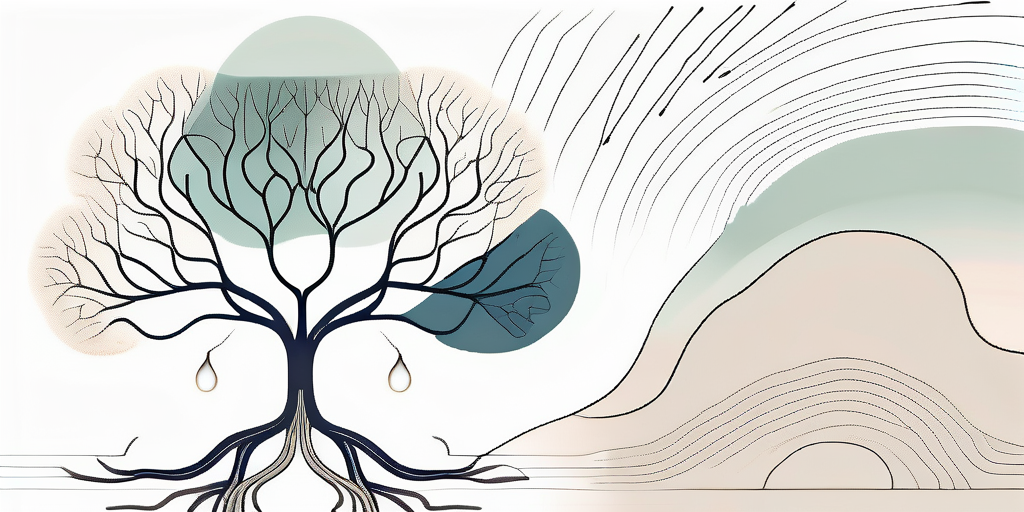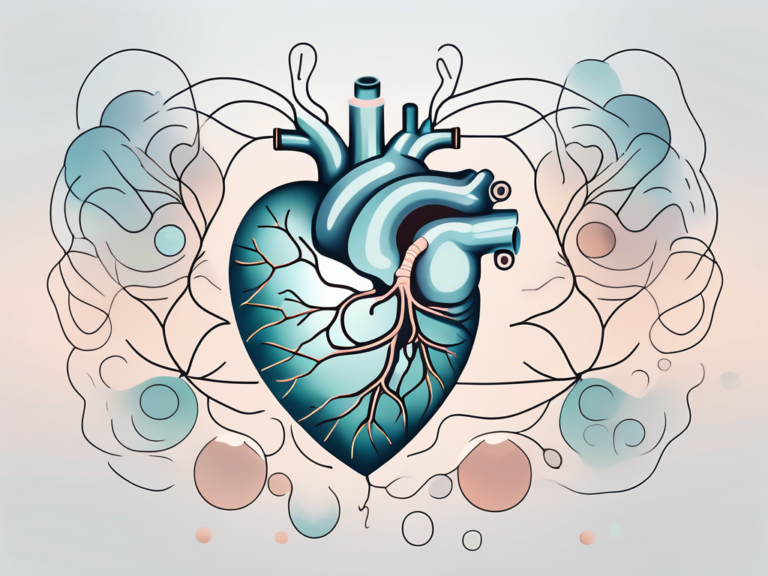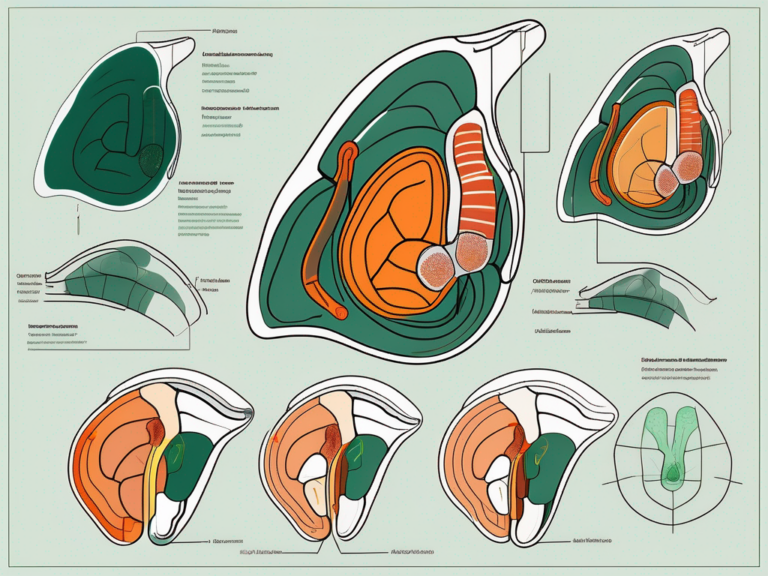meditation and vagus nerve
Meditation is a well-known practice that has been used for centuries to promote relaxation, reduce stress, and improve overall well-being. However, recent research has shed light on a specific aspect of meditation that may be responsible for many of its benefits – the vagus nerve. In this article, we will explore the connection between meditation and the vagus nerve and how stimulating this nerve through meditation can have profound effects on our physical and mental health.
Understanding the Vagus Nerve
The vagus nerve, also known as the wandering nerve, is the longest cranial nerve in the body. It extends from the brainstem down to the abdomen, connecting various organs along the way. This nerve plays a crucial role in regulating many bodily functions, including digestion, heart rate, immune response, and mood.
Anatomy and Function of the Vagus Nerve
The vagus nerve consists of two main branches – the sensory and the motor branch. The sensory branch carries information from the body’s organs to the brain, providing a feedback loop that helps regulate bodily functions. For example, when you eat a meal, the sensory branch of the vagus nerve relays signals to the brain, informing it of the stomach’s fullness and triggering a feeling of satiety.
The motor branch, on the other hand, carries signals from the brain to the organs, influencing their activity. It helps regulate digestion by stimulating the release of digestive enzymes and promoting the movement of food through the gastrointestinal tract. Additionally, the vagus nerve plays a role in heart rate regulation, helping to maintain a steady rhythm and prevent arrhythmias.
Through its extensive network of connections, the vagus nerve helps maintain homeostasis in the body, ensuring that everything is functioning optimally. It is often described as the body’s communication superhighway, facilitating communication between the brain and the different organs. This intricate network allows for constant monitoring and adjustment, allowing the body to adapt to changing conditions and maintain equilibrium.
The Role of the Vagus Nerve in the Body
One of the most critical roles of the vagus nerve is its ability to regulate the body’s stress response. When activated, it triggers the relaxation response, helping the body calm down after a stressful event. This allows for restoration and healing, both physically and mentally. Research has shown that stimulating the vagus nerve can have a profound impact on reducing anxiety and improving overall well-being.
In addition to its role in stress regulation, the vagus nerve also plays a vital role in maintaining a healthy immune system. It releases anti-inflammatory cytokines, substances that reduce inflammation in the body. This can contribute to better overall health and reduced risk of chronic diseases. Furthermore, the vagus nerve communicates with the gut microbiota, the trillions of microorganisms residing in our digestive system, influencing their composition and function. This interaction between the vagus nerve and the gut microbiota has been linked to various aspects of health, including metabolism, mood, and immune function.
Understanding the intricate workings of the vagus nerve is key to unlocking its potential in improving our health and well-being. Ongoing research continues to shed light on the fascinating connections between this remarkable nerve and various aspects of our physical and mental health.
The Connection Between Meditation and the Vagus Nerve
Research has shown that meditation can have a profound effect on the vagus nerve, stimulating its activity and promoting overall well-being. Let’s explore how meditation affects the vagus nerve and the impact of the vagus nerve on the meditation experience itself.

How Meditation Affects the Vagus Nerve
When we engage in meditation, we enter a state of deep relaxation, which triggers the activation of the parasympathetic nervous system – the branch of the autonomic nervous system responsible for rest and digestion. This activation leads to an increase in vagal tone, which refers to the activity and efficiency of the vagus nerve.
As we deepen our meditation practice, the vagus nerve becomes more active, fostering a sense of calm, reducing anxiety, and promoting emotional well-being. This increased vagal tone also has a profound impact on our physical health, enhancing digestion, reducing inflammation, and improving heart health.
The Impact of the Vagus Nerve on Meditation Experience
Conversely, the vagus nerve also plays a significant role in our meditation experience. Its activity is closely linked to our emotional state and the overall quality of our meditation practice. By stimulating the vagus nerve, we can deepen our meditative state, enhance our focus, and experience greater clarity of mind.
Furthermore, recent studies have revealed that the vagus nerve is not only responsible for our physical and emotional well-being but also plays a crucial role in our social interactions. It has been found that individuals with higher vagal tone tend to have better social skills and are more adept at forming and maintaining meaningful connections with others.
Moreover, the vagus nerve is intricately connected to our body’s stress response system. When we experience stress, the vagus nerve helps to regulate our body’s physiological response, promoting a state of relaxation and reducing the release of stress hormones. By incorporating meditation into our daily routine, we can strengthen the vagus nerve’s ability to counteract stress and enhance our resilience to life’s challenges.
Additionally, the vagus nerve has been found to have a direct impact on our immune system. Research has shown that individuals with higher vagal tone have a stronger immune response, making them less susceptible to infections and diseases. By practicing meditation regularly and stimulating the vagus nerve, we can boost our immune system and improve our overall health.
Benefits of Stimulating the Vagus Nerve through Meditation
The stimulation of the vagus nerve through meditation offers numerous benefits for both our physical and mental well-being. Let’s delve into some of these benefits.
Physical Health Benefits
Stimulating the vagus nerve through meditation can have a positive impact on our physical health. It has been shown to improve digestion, increase blood flow, and regulate heart rate variability. This means that by practicing meditation, we can support our body’s natural ability to break down food more efficiently, ensuring that we absorb the necessary nutrients for optimal functioning. Furthermore, increased blood flow can enhance the delivery of oxygen and nutrients to our organs, promoting their overall health and vitality. The regulation of heart rate variability is also crucial as it helps maintain a stable heart rate, reducing the risk of cardiovascular diseases.
Additionally, vagus nerve stimulation promotes the release of feel-good hormones, such as oxytocin and serotonin, which contribute to overall well-being. Oxytocin, often referred to as the “love hormone,” plays a key role in bonding, trust, and social connection. By increasing levels of oxytocin through vagus nerve stimulation, meditation can help foster healthier relationships and a greater sense of belonging. Serotonin, on the other hand, is known as the “happiness hormone” and plays a vital role in regulating mood, appetite, and sleep. By stimulating the vagus nerve, meditation can boost serotonin levels, leading to improved mood and a greater sense of emotional well-being.
Mental Health Benefits
Meditation’s impact on the vagus nerve also extends to our mental health. By increasing vagal tone, meditation helps reduce anxiety, alleviate symptoms of depression, and enhance our resilience to stress. Vagal tone refers to the activity level of the vagus nerve, and a higher vagal tone is associated with better emotional regulation and mental health. Through regular meditation practice, we can strengthen our vagal tone, enabling us to navigate life’s challenges with greater ease and composure.
Furthermore, meditation promotes emotional regulation and a greater sense of inner peace and contentment. By stimulating the vagus nerve, meditation activates the parasympathetic nervous system, which is responsible for the body’s relaxation response. This activation helps calm the mind, reduce racing thoughts, and cultivate a state of tranquility. As a result, individuals who incorporate meditation into their daily routine often report improved emotional well-being, increased self-awareness, and a greater ability to handle difficult emotions.
In conclusion, the benefits of stimulating the vagus nerve through meditation are vast and encompass both physical and mental well-being. By practicing meditation, we can support our body’s natural healing processes, enhance our emotional resilience, and cultivate a greater sense of overall well-being. So, why not start incorporating meditation into your daily routine and experience the transformative power it can have on your life?
Different Meditation Techniques for Vagus Nerve Stimulation
When it comes to vagus nerve stimulation, there are a plethora of meditation techniques that can be specifically targeted. Let’s delve into two popular techniques that have gained recognition for their effectiveness:

Deep Breathing and the Vagus Nerve
Deep breathing exercises, such as diaphragmatic breathing or alternate nostril breathing, have been found to activate the vagus nerve and promote a profound sense of relaxation. By consciously focusing on slow, deep breaths, we are not only increasing the activity of the vagus nerve, but also enhancing our body’s relaxation response.
Diaphragmatic breathing, also known as belly breathing, involves taking slow, deep breaths that expand the diaphragm and fill the lungs with fresh oxygen. This technique not only stimulates the vagus nerve but also helps to regulate heart rate, blood pressure, and reduce stress levels. Alternate nostril breathing, on the other hand, involves inhaling through one nostril while closing the other, and then exhaling through the opposite nostril. This technique is believed to balance the energy flow in the body and activate the vagus nerve, leading to a state of calm and tranquility.
Guided Imagery and the Vagus Nerve
Another powerful technique for stimulating the vagus nerve is guided imagery. By engaging our imagination and tapping into the brain-body connection, guided imagery allows us to visualize calming and soothing images, thereby activating the vagus nerve and deepening our sense of relaxation and well-being.
During a guided imagery session, individuals are guided through a series of vivid mental images that evoke positive emotions and sensations. This process not only stimulates the vagus nerve but also helps to reduce anxiety, improve mood, and enhance overall mental well-being. By immersing ourselves in a serene mental landscape or envisioning ourselves in a peaceful environment, we can tap into the power of our imagination to activate the vagus nerve and experience a profound sense of calm and inner peace.
Overcoming Challenges in Vagus Nerve Stimulation
While vagus nerve stimulation through meditation can offer significant benefits, it is not always an easy process. Let’s explore some common difficulties and discover tips for effective vagus nerve stimulation through meditation.
Common Difficulties in Stimulating the Vagus Nerve
One common difficulty in stimulating the vagus nerve through meditation is maintaining consistency in our practice. Life’s demands can often get in the way, making it challenging to establish a regular meditation routine. We may find ourselves caught up in the busyness of daily life, juggling work, family, and other responsibilities, leaving little time for self-care.
Another challenge is finding the right meditation technique that resonates with us and effectively activates our vagus nerve. With the abundance of meditation styles and approaches available, it can be overwhelming to choose the one that suits us best. Some techniques may not provide the desired results, leading to frustration and discouragement.
Tips for Effective Vagus Nerve Stimulation through Meditation
To overcome these challenges, it can be helpful to set aside dedicated time for meditation, even if it’s just a few minutes each day. By prioritizing our well-being and making meditation a non-negotiable part of our daily routine, we can create space for vagus nerve stimulation and reap its benefits.
Experimenting with different meditation techniques is another way to enhance vagus nerve stimulation. Each person is unique, and what works for one may not work for another. Trying out various approaches, such as mindfulness meditation, loving-kindness meditation, or breathwork, can help us discover the technique that resonates with us and activates our vagus nerve effectively.
Additionally, seeking guidance from a meditation teacher or joining a meditation group can provide support and accountability. Having a mentor or a community of like-minded individuals can offer valuable insights, encouragement, and motivation on our meditation journey. They can help us navigate the challenges, share their experiences, and provide guidance when we feel stuck or unsure.
The Future of Meditation and Vagus Nerve Research
The connection between meditation and the vagus nerve has gained significant attention in recent years, leading to continued research in this field. Let’s explore the current trends in research and the potential implications for health and wellness.

Current Trends in Research
Scientists are currently investigating the mechanisms through which vagus nerve stimulation promotes physical and mental well-being. They are exploring the impact of meditation on the expression of genes related to inflammation, immune function, and stress response. Additionally, researchers are investigating the use of vagus nerve stimulation as a therapeutic tool for various conditions, including depression, anxiety, and chronic pain.
One fascinating area of research is the exploration of the gut-brain connection and its relationship to the vagus nerve. Recent studies have shown that the vagus nerve plays a crucial role in regulating the communication between the gut and the brain. This has led to a growing interest in understanding how meditation can influence this connection, potentially leading to improvements in gut health and overall well-being.
Potential Implications for Health and Wellness
The ongoing research in meditation and the vagus nerve holds exciting potential for health and wellness. It may pave the way for new interventions and treatments that harness the power of meditation and vagus nerve stimulation. As this research continues to unfold, individuals can explore and incorporate these practices into their own self-care routines.
Furthermore, the potential implications of this research extend beyond the individual level. If meditation and vagus nerve stimulation prove to be effective in promoting well-being, it could have significant implications for public health. Imagine a future where meditation is widely recognized as a powerful tool for managing stress, improving mental health, and enhancing overall quality of life. This could lead to a shift in healthcare practices, with meditation being integrated into treatment plans and preventative care strategies.
In conclusion, the connection between meditation and the vagus nerve offers a fascinating insight into the profound effects that meditation can have on our physical and mental well-being. By understanding the anatomy and function of the vagus nerve, exploring the benefits of vagus nerve stimulation, and adopting various meditation techniques, individuals can tap into the power of their own vagus nerve and experience the transformative effects of meditation.






